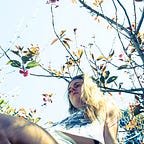Yes We Cannes!
Celebrating the expansion of pop culture lesbian narratives
 I developed my first lesbian crush when I was 17, but until fairly recently, I was adamant that I was not a lesbian. This was mostly due to how I conceived of lesbians, which was not anything I wanted to be. Lesbians coached sports and wore chinos. They loved acoustic guitar and building things. They rejected what I cared about, like party rap and symmetrical hair styles.
I developed my first lesbian crush when I was 17, but until fairly recently, I was adamant that I was not a lesbian. This was mostly due to how I conceived of lesbians, which was not anything I wanted to be. Lesbians coached sports and wore chinos. They loved acoustic guitar and building things. They rejected what I cared about, like party rap and symmetrical hair styles.
At 31, I’ve finally come to accept my sexuality, partly due to maturity, but mostly due to a dramatic shift in popular representation. Growing up, I had no lesbian icons. There was Ellen DeGeneres, who I found corny and undesirable. I wanted to be with someone with flowing hair and curves not concealed by a sports bra. I was feminine and attracted to femininity, which I didn’t realize was a type of lesbian relationship that existed. For years, the only viable option seemed to be bicurious straight women, but they always left me for men. Sometimes I fell for gay-seeming or legitimately gay men, who also left me for men. Aside from being horrible for my self-esteem, these experiences emphasized to me that sexuality is not as neat and easily definable as many believe.
But the past decade has seen massive strides in how the public conceives of queerness. First, we’re coming to embrace sexual fluidity. A…
